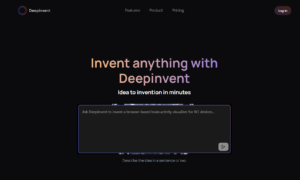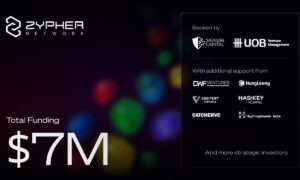By: Spencer Steliga, CEO and Founder, shuddl
I think a little differently than most people.
So, I didn’t follow the standard advice for bootstrapping or startup success.
If I had, I’m not sure I’d be where I am today. Developing a technology that can transform an industry is no easy feat, but reaching over $7 million in revenue in the first year with, a beta product, told us we were on the right track.
It’s not that all the other guides and tips are wrong. Rather, every entrepreneur is unique, and how we each find success can look very different from the stock “how to’s” we’ve all seen.
It’s time we break free from the expected and explore new ways to follow our own instincts. Here are my thoughts on how to achieve this:
Lean into your weaknesses.
This really goes against everything we’ve learned, but, here’s the thing: you’re not going to have time to be doing serious self-work while starting a company, so just let that go.
I know I’m obsessive and I’m a perfectionist. Instead of worrying about how these traits could lead to burnout or turn people off, I just let them be. I let *me* be.
What does this look like?
I take my phone into the shower so I don’t miss a single call. I want my company to be the most responsive and deliver the highest client satisfaction, so I go all in.
I often feel that I’m awkward on the phone, at least in sales calls. So, I don’t cold-call. I don’t think I’ve ever made a successful cold-call! Instead, I spend a lot of time researching prospective clients and I write emails to them. I don’t use a script. I just show them that we understand their business and talk about how we can help them. And my response rate is about 40%.
That doesn’t stop with the sales pitch. I take care of the people who are feeding me, treating each one like family. As soon as a client is onboarded, I send a handwritten letter thanking them for the opportunity. And they usually write back.
Every client I’ve ever had in my career is still with me to this day.
Do everything, but not forever.
That’s something people always tell you not to do. Everyone is worried about being stretched too thin and missing something important. Rightly so. On the contrary you genuinely have to do everything from the beginning because your vision is only yours at first. No one else can capture it. If you delegate too much too early, it dilutes your vision.
Yes, you’ll have to hire employees and find a way to make sure their work remains true to your vision. That’s the “not forever” part.
How do you do that?
I trust my gut, first and foremost.
You may be spending the next five to 10 years, possibly the rest of your life, working with your first hires. And, they will in time hire more versions of themselves, so it’s important to make sure your first hires are the right hires. In them, you’re creating leaders who are going to help set your company culture within their own teams as the company expands.
So, I hire people I trust and who are problem-solvers like me, people who will find a way to get from point A to point B, regardless of prior experience. I can’t stop until I’ve found a solution, and I want the people around me who have that same drive.
Be self-aware.
Self-awareness is a very underrated quality in a founder. Your company is you. Every interaction you have, whether you’re with your own company or with a different company, people remember it, and they remember you, and they will find you even after you’ve moved on.
So, I’m constantly aware of how I present myself, how my actions reflect on the company, and how I set the tone—whether deliberately or by mistake.
Why does it matter?
I learned quickly that if I’m late for a meeting, others will be late for the next meeting. I didn’t feel that I could “crack down” on them, because I had unintentionally modeled the same behavior.
I’m mindful of how I spend my time. As the founder, your time is the most valuable commodity the company has at the beginning.
This meant finding the most efficient and effective way to work with people in many different time zones. Remote work is hard, and we’ve gone through pretty much every tech solution possible.
In the end, it wasn’t all about the tech. We embraced asynchronous communication—email, voicemail, and project platforms that allow people to review and respond to messages and prompts that don’t require real-time engagement.
But the key was the good, old-fashioned, face-to-face.
I, personally, don’t like long meetings. But we had tried 15-minute touch-base meetings throughout the day or as necessary, and it didn’t seem to be working. We switched to a daily one-hour meeting, at or near the start of most of our engineers’ work days, and the culture shift was amazing. These meetings seem to get everyone moving with more energy and focus.
No, it’s not my preference. But it’s what works best for my company.
The takeaways
There’s no road map for exactly how to take a good idea and turn it into a thriving business, but there are plenty of resources and tips to help you find your way.
Just remember that it all starts and ends with you. It doesn’t matter if your path is different. It’s yours, so, follow it.
About the Author
Spencer Steliga is the CEO and Founder of shuddl, an AI-powered platform pairing unused freight space with shippers’ available goods to reduce cost, waste, and carbon use while increasing sustainability and logistics performance.































